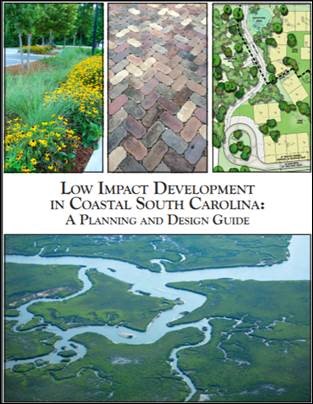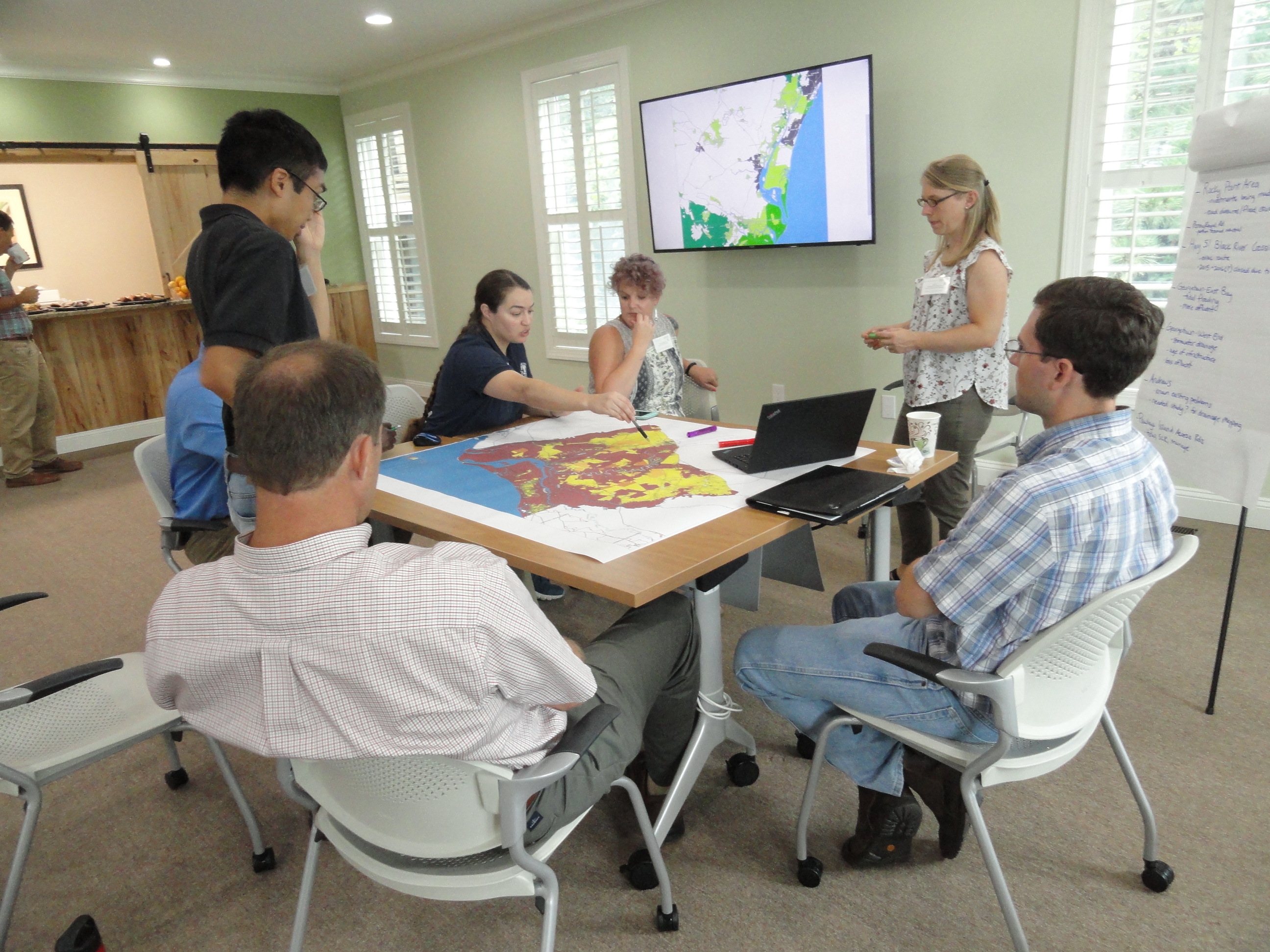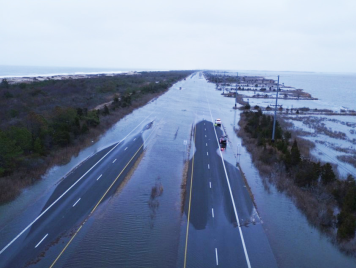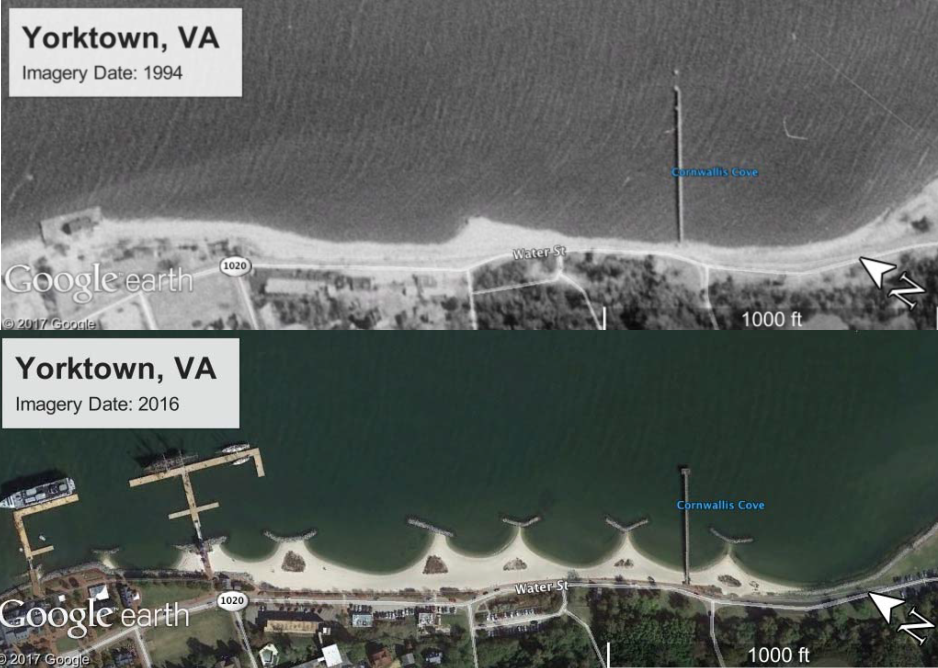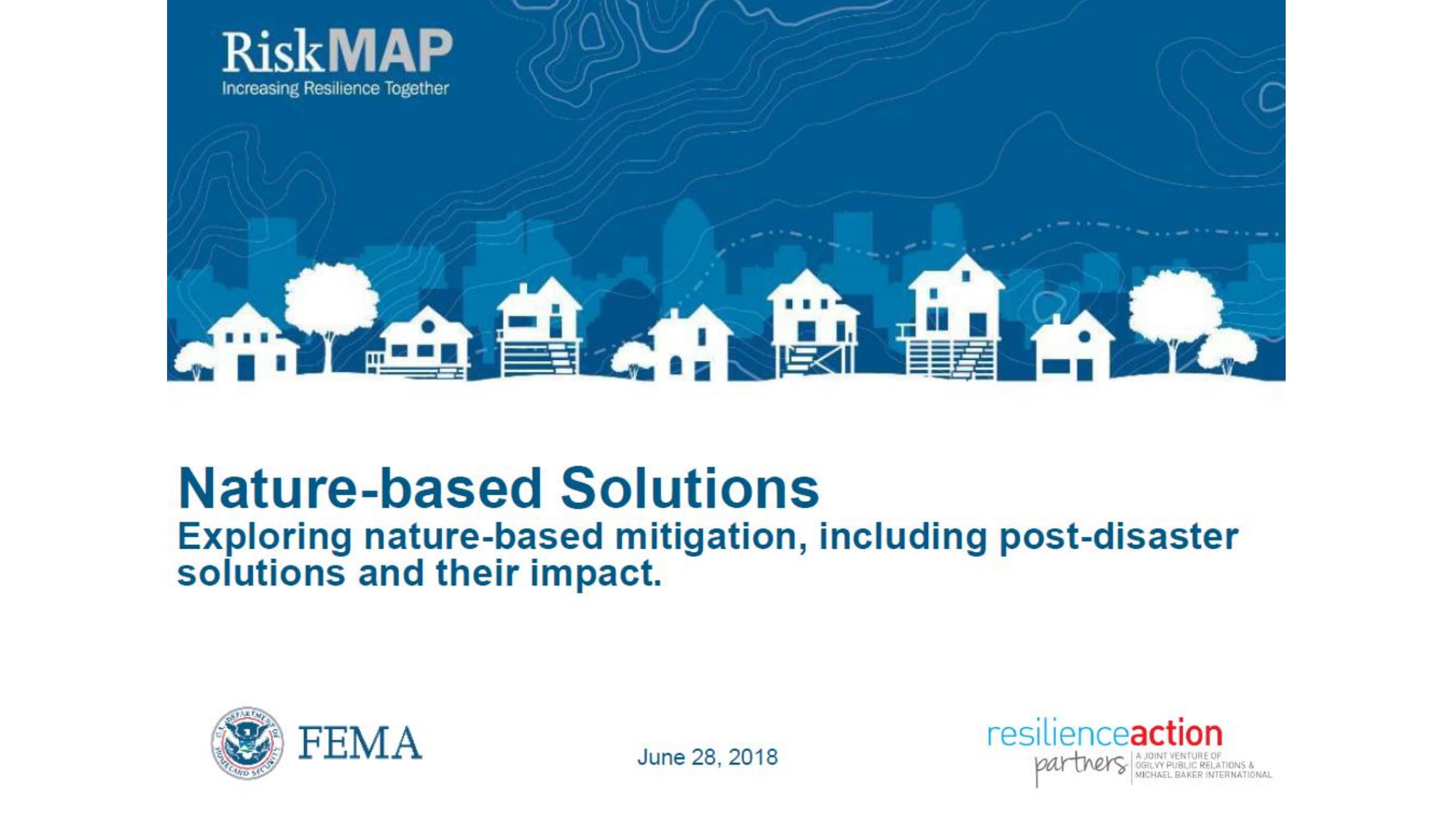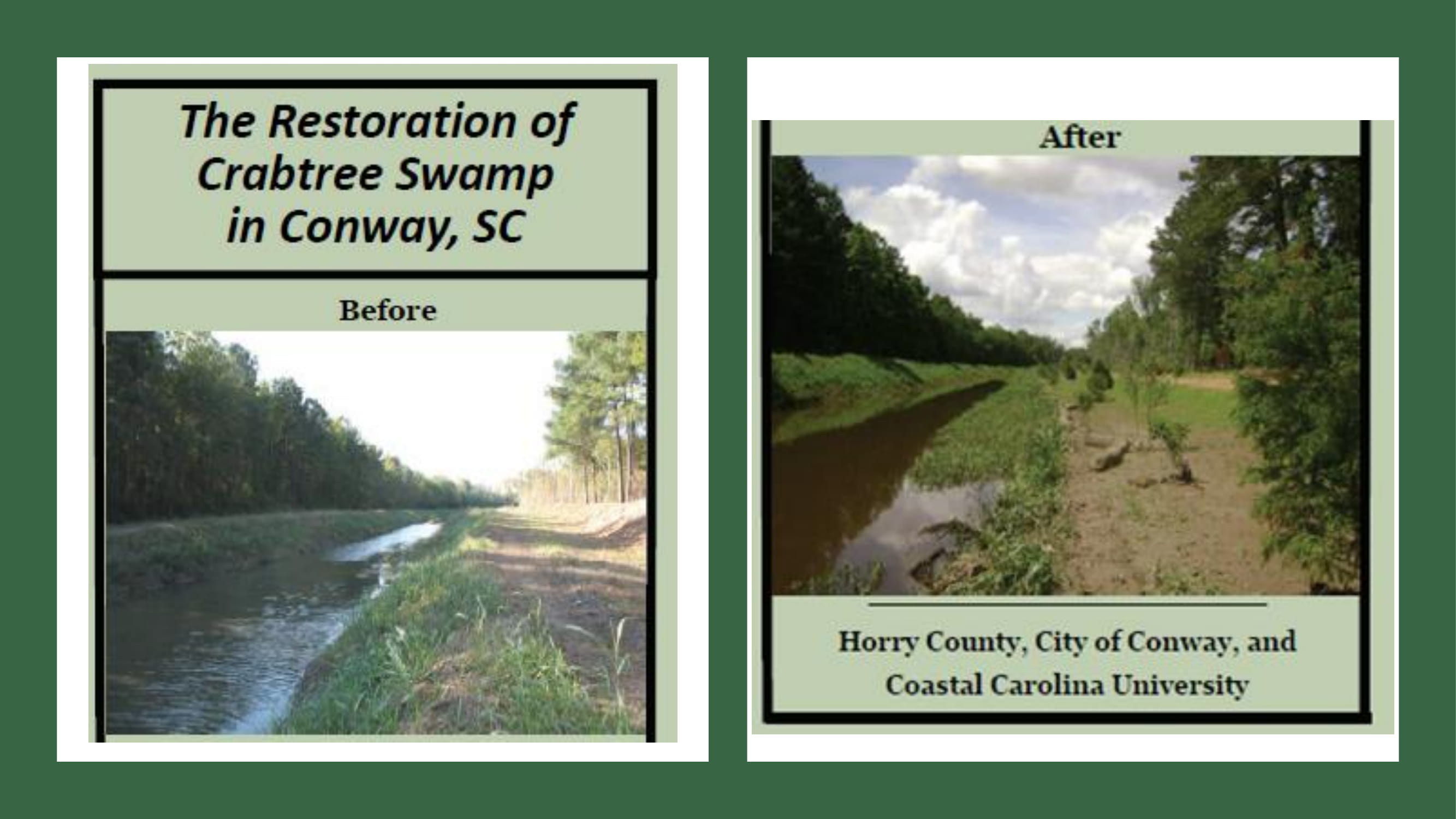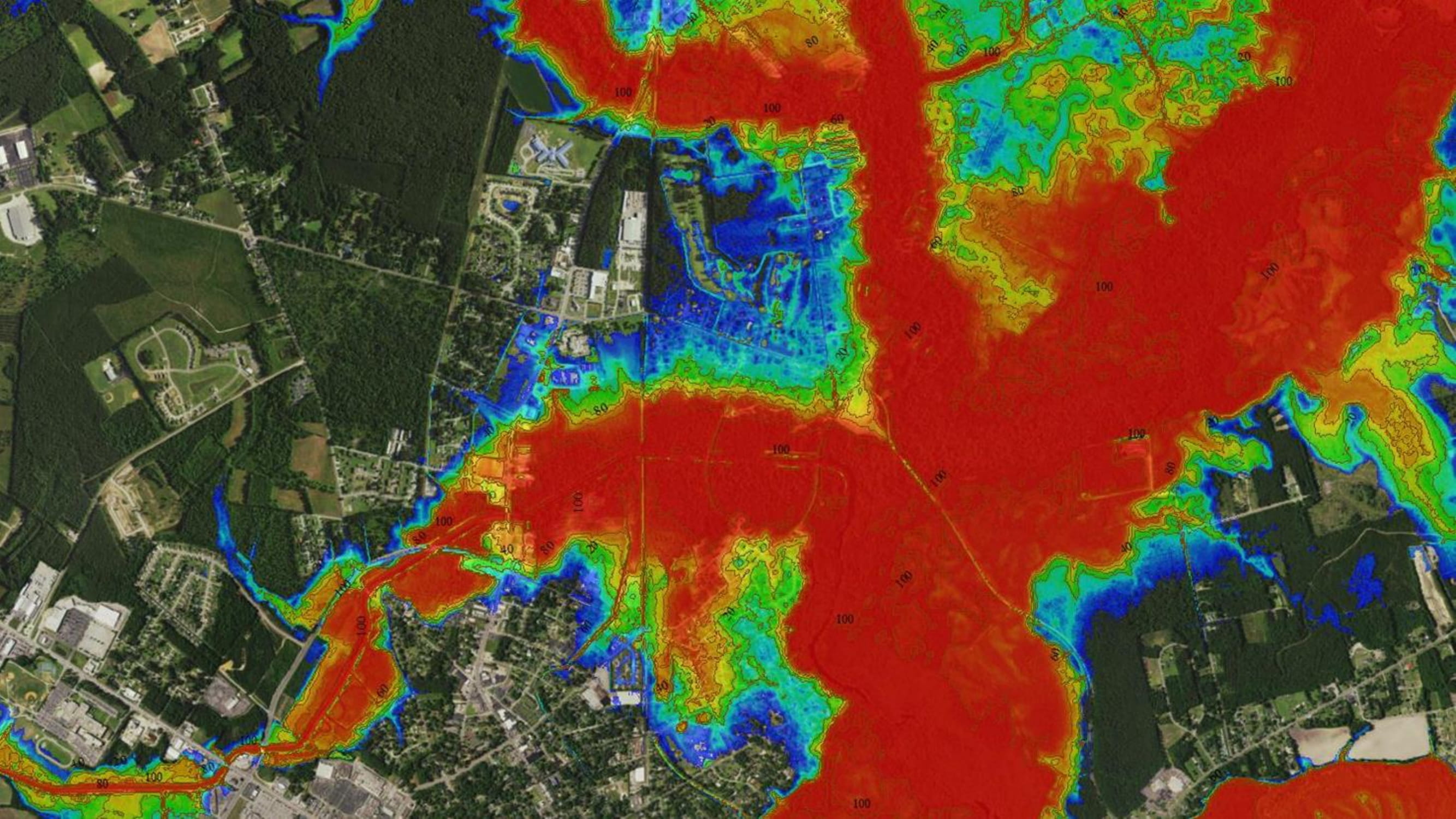South Carolina
South Carolina’s North Coast region is well known for the beaches of the Grand Strand, which attract visitors and residents year-round. Less than 10 miles away are the mighty rivers of the Waccamaw, Great Pee Dee and Little Pee Dee. During storm events, these rivers swell over their banks, closing roads and flooding neighborhoods. The Nature Conservancy and partners are modeling flood risk to South Carolina communities to determine where restoring and protecting the natural features of the floodplain and coasts can best reduce the region’s vulnerability.
Overview

TNC’s oyster reef restoration work along Jeremy Island in South Carolina. Photo credit: © Clay Bolt for The Nature Conservancy
Increased flooding from King Tides and extreme storms like the floods of October 2015 and Hurricane Matthew (listed as one of the top U.S. Billion-Dollar Weather & Climate Disasters) threaten coastal South Carolina’s communities, industries, infrastructure, and drinking water. The coast is home to over 1 million residents in the Charleston, Beaufort, Hilton Head, and Grand Strand regions. A popular tourist destination, the economy is also driven by new industry leaders such as Boeing and Volvo, and three shipping ports. While regional growth brings demands for new infrastructure and housing, this brings the opportunity for local governments to consider new approaches to reduce risk to life and property from storm flooding and sea level rise.
South Carolina communities are working together to implement a coastal resilience approach including proactive assessments of community risks using the best available science. Because natural habitats can reduce hazards due to flooding and storms, natural solutions are being used alone or with traditional structures (sea walls, jetties, groins, etc.). Places where natural solutions can be used is considered a “double win” for people by providing reduced damages during storms and flooding events and increased economic benefits like tourism and fishing are supported by healthy habitats.
North Coast
Horry County, the City of North Myrtle Beach, and the Waccamaw Council of Governments have come together with TNC and other partners to implement a coastal resilience approach to reduce risk to communities in the face of coastal hazards. Collectively referred to as the North Coast, these communities have witnessed the direct impacts of recent storms. Stakeholders are working proactively to identify measures to reduce the threats and damages of storm events, and to identify solutions.
Two major threats to the North Coast community are relative sea level rise (SLR) and riverine flooding. Effects of relative sea level rise on North Coast communities include increasing shoreline erosion, increased flooding, saltwater intrusion of drinking water intake sites, and loss of critical habitats, important for supporting the region’s industry, tourism and fishing. Additionally, over 270,000 people live along rivers within floodplain regions vulnerable to storm events. Important infrastructure like major state highways and interstate freeways also run along rivers or transverse floodplains and at risk of flooding, especially when high river flows are exacerbated by heavy rain events or storm surge from hurricanes.
The Nature Conservancy and partners have been working on nature-based and community resilience strategies for over 40 years. Land conservation protects our future drinking water sources and allows the naturally swelling rivers to overflow their banks during storms. We have been protecting our shorelines and providing pilot projects by restoring oyster reefs along eroded marsh areas.
Living Shorelines
Successful living shoreline pilot projects installed by South Carolina Dept. of Natural Resources, The Nature Conservancy and the U.S. Fish and Wildlife Service have inspired private property owners who are now interested in using living shorelines to prevent erosion their own property. A regulatory process to guide the design and permitting of living shorelines is currently under development by the South Carolina Department of Health and Environmental Control.

Employees from Boeing and The Nature Conservancy build a new Oyster Castle reef on along the Intracoastal Waterway in McClellanville, SC.
Natural infrastructure, using natural materials such as oyster reefs over traditional shoreline stabilization, results in numerous benefits to coastal ecosystems. Natural infrastructure reduces erosion and increases shoreline stabilization. It improves water quality while maintaining healthy natural habitats which enhance biodiversity and important commercial and recreational species (such as fish, shrimp and crabs).
The best solution to apply will be determined by factors including existing vegetation, wave energy, slope of the shoreline, boat traffic and the width of existing marsh. In South Carolina, the following materials have been tested:
- Oyster reefs made with a variety of techniques and materials such as bagged, dried oyster shells, concrete-based oyster castle blocks, abandoned or modified crab traps (& dipped in concrete), piles of loose dried oyster shell or reefs started from cut, dried/dead bamboo stakes (& bamboo stakes dipped in concrete)
- Planted native marsh vegetation (ex. Spartina alterniflora)
- Coir logs made of coconut fibers
Currently, South Carolina is in a 5 year process to create a permit for property owners to install Living Shorelines. If you need assistance, contact a qualified consultant or marine contractor who is familiar with the nature based solutions. Property owners concerned about shoreline erosion can learn about living shoreline techniques and find qualified consultants by visiting the Coastal Restoration and Natural Infrastructure Project Database and the Living Shorelines Academy Professional Directory.
Habitat Preservation
Healthy wetlands can store water and reduce flood risks while also supporting wildlife habitat and recreational opportunities. For over 40 years, TNC and its private and public partners have been protecting wetland habitats in South Carolina. The ACE Basin project is one of most successful models of public-private partnership for land protection in the country, and in 25 years protected over 200,000 acres. At the heart of the ACE Basin is the St. Helena Estuary, a productive nursery for fish and wildlife with extensive salt marshes, beaches, wetlands, and floodplains.

Protected lands and waters play a critical role for wildlife and natural systems, and provide food and recreation for humans. Now, they also are increasingly important to build resilient communities. Photo credit: © Clay Bolt for The Nature Conservancy
Flood Risk Reduction
Over 30 organizations have been working together to address flood resilience issues in Horry and Georgetown Counties, and introduce the concept of resilience through natural infrastructure. Three habitats with the greatest potential in these regions are: freshwater, beaches, and marsh.
A multi-year plan to address North Coast flooding has been developed and is in the initial stages of implementation including: 1) an assessment of the spatial extent of flooding in the area 2) explicit identification of features that need to be protected or restored to reduce, or not worsen future flooding 3) inclusion of resilience plans into county and city comprehensive plans and 4) identification of restoration projects that communities can implement to reduce flooding (such as headwater stream restoration, constructed wetlands, and low-impact development measures). Success will also require an education & outreach component to reach out to residents who have on-the-ground knowledge of flooding events and can provide input into flooding models. Additionally, including feedback from county and city planning directors will be an essential step in ensuring that this flood risk reduction plan is adopted into community Comprehensive Plans.

Over 2 million acres of protected coastal habitat in South Carolina buffer communities from natural hazards by absorbing floodwaters, storm surges, and sea level rise. Photo credit: © Mac Stone
To maintain and improve natural flood storage and water flows, TNC and partners are currently looking to implement protects that restore and improve management of streams connected to the Waccamaw and Pee Dee Rivers. Using GIS analysis, they are identifying multiple flooded areas as potential restoration projects with the hope that additional priority projects will be identified and some can be adopted into municipal comprehensive plans and Army Corps strategies as a resilience measure.
South Carolina Coastal Resilience Partners
Habitat Preservation
The Nature Conservancy
South Carolina Department of Natural Resources
US Fish and Wildlife
US Forest Service
Ducks Unlimited
Lowcountry Land Trust
Beaufort Open Space Land Trust
Flood Risk Reduction
Clemson University
Horry County
The Nature Conservancy
North Inlet-Winyah Bay National Estuarine Research Reserve
South Carolina Department of Health & Environmental Control Ocean & Coastal Resource Management
US Fish & Wildlife Service Coastal Program
Waccamaw Council of Governments
Living Shorelines
Boeing
Charleston County Park & Recreation Commission
CH2M
Coastal Expeditions
Frances P. Bunnelle Foundation
Lowcountry Land Trust
National Oceanic and Atmospheric Administration
The Nature Conservancy
South Carolina Department of Health & Environmental Control Ocean & Coastal Resource Management
South Carolina Department of Natural Resources
US Fish & Wildlife Service Coastal Program
Wildlife Conservation Society
Yawkey Foundation
Resources
For the latest reports, publications and other resources on coastal resilience visit the Coastal Resilience Resource Library on the Conservation Gateway.
North Coast Resilience Project Fact Sheet
National Sea Grant Resilience Toolkit
South Carolina Sea Grant – Coastal Climate resources
Coastal South Carolina Community Rating System (CRS) Users Group
Nature-based Resilience for Coastal Highways
Naturally Resilient Communities – Using Nature to Address Flooding
A Procurement Guide to Nature-Based Solutions

